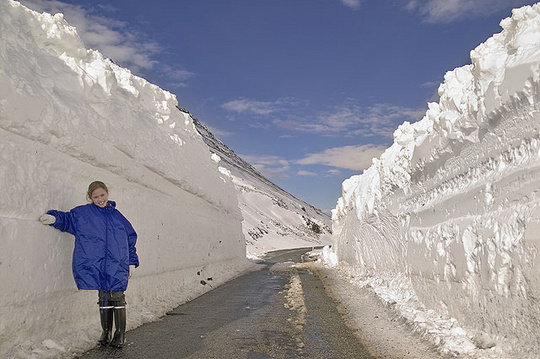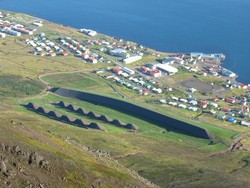The design of avalanche protection dams
Recent practical and theoretical developments
Snow avalanches represent a serious problem for society. An adequate level of avalanche safety is a prerequisite to further development of habitable areas, destinations of tourism, and critical segments of some traffic routes.
Protective measures against snow- and landslides are widely used to improve the safety of settlements in avalanche-prone areas but there exist no accepted design guidelines for e.g. braking mounds for retarding snow avalanches although they are widely used as a part of avalanche protective measures.
In recent years, IMO has participated in extensive research supported by the European Commission, EC, and various other funds, which is meant to improve this situation. The results of the collective research were published in 2009 in a book called The design of avalanche protection dams - Recent practical and theoretical developments.
The design of protective measures in the run-out zones of avalanches needs to be based on an understanding of the dynamics of granular flows against obstructions that lead to a change in the flow direction, slow the flow down or cause it to stop. Laboratory experiments have been performed in recent years with granular material in order to shed light on the dynamics of avalanche flow over and around braking mounds and catching dams and to estimate the retarding effect of the mounds.
The book discusses the design of dams and other protective measures in the run-out zones of wet- and dry-snow avalanches. Recent theoretical developments and the results of field and laboratory studies are summarised and combined with traditional design principles to form a new framework for the design of avalanche dams.
In spite of advances in the understanding of the dynamics of avalanches against obstacles in recent years, there remains considerable uncertainty regarding the effectiveness of deflecting dams, catching dams, braking mounds, wedges and other defense structures in run-out zones.
Although uncertainties remain, this book represents an important improvement. It is published as part of an EC series, Climate Change and Natural Hazard Research.
The book can be ordered at the EU Bookshop and it can be accessed on the web both as PDF suitable for the screen (1.5 Mb) and in higher resolution suitable for printing (27.9 Mb).
Edited by T. Jóhannesson of the Icelandic Meteorological Office and by P. Gauer, P. Issler and K. Lied of the Norwegian Geotechnical Institute. Contributions by M. Barbolini, U. Domaas, T. Faug, P. Gauer, K. M. Hákonardóttir, C. B. Harbitz, D. Issler, T. Jóhannesson, K. Lied, M. Naaim, F. Naaim-Bouvet and L. Rammer. Comments and improvements by S. Margreth, J.S. Ásgeirsson and N. Nawri.

April 2010: Passage has been made through snow on the road. Súðavík, Súðavíkurhlíð, West fjords. Photo: Þórður Sigurðsson.




